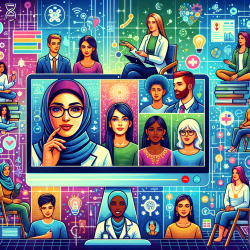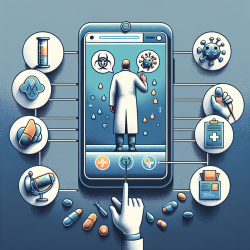In the evolving landscape of telemedicine, new opportunities are emerging for Deaf signing populations. A recent systematic review titled "What is the efficacy and effectiveness of telemedicine intervention for deaf signing populations in comparison to face-to-face interventions?" highlights the potential of telemedicine to bridge the gap in healthcare services for Deaf individuals.
Deaf signing populations face significant inequalities in accessing health services and achieving health outcomes. The review, which examined studies involving telemedicine interventions, revealed promising yet underexplored benefits of using videoconferencing for delivering mental health services to Deaf individuals. Here are some key takeaways for practitioners looking to enhance their skills and better serve Deaf clients:
1. Embrace Telemedicine as a Viable Option
Telemedicine offers a unique solution for Deaf signing populations, particularly those who are geographically dispersed. The visual modality of sign language aligns well with videoconferencing, making it a natural fit for remote therapy sessions. Practitioners should consider integrating telemedicine into their service offerings to increase accessibility for Deaf clients.
2. Focus on Cultural and Linguistic Competence
One of the critical factors in the success of telemedicine for Deaf individuals is the cultural and linguistic competence of the therapist. Therapists fluent in sign language can provide direct communication without the need for an interpreter, enhancing the therapeutic alliance and overall satisfaction of the client. Practitioners should seek training in sign language and Deaf culture to improve their service delivery.
3. Prioritize Client Satisfaction and Feedback
Both studies included in the review reported high levels of client satisfaction with telemedicine services. However, the reasons behind this satisfaction were not fully explored. Practitioners should actively seek feedback from their Deaf clients to understand their experiences and preferences, which can inform and improve service delivery.
4. Address Technical Challenges
Technical issues, such as poor video quality, can hinder the effectiveness of telemedicine. Practitioners must ensure they have reliable technology and internet connectivity to provide seamless therapy sessions. Additionally, offering technical support to clients can help mitigate any challenges they may face.
5. Advocate for Further Research
The review identified a significant gap in the literature regarding the effectiveness of telemedicine interventions for Deaf populations. Practitioners should advocate for and participate in further research to build a robust evidence base. Qualitative studies, including patient interviews, can provide valuable insights into the acceptability and impact of telemedicine on Deaf individuals.
Telemedicine has the potential to revolutionize access to mental health services for Deaf signing populations. By embracing this technology and focusing on cultural competence, client satisfaction, and continuous improvement, practitioners can make a meaningful difference in the lives of Deaf individuals.
To read the original research paper, please follow this link: What is the efficacy and effectiveness of telemedicine intervention for deaf signing populations in comparison to face-to-face interventions? A systematic review.










